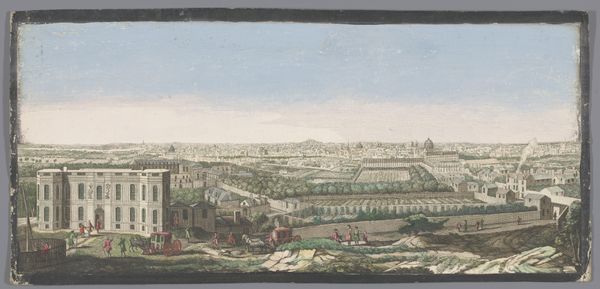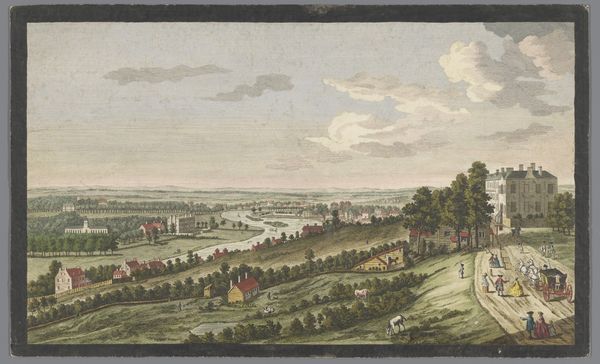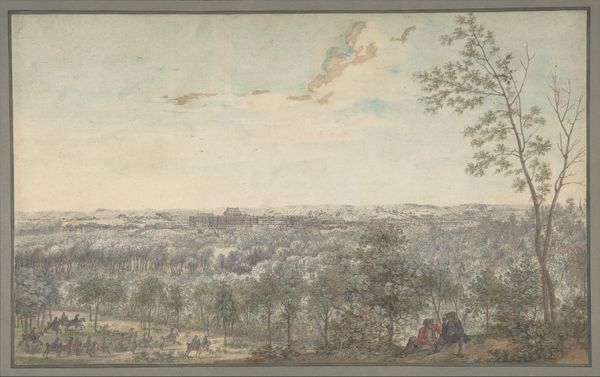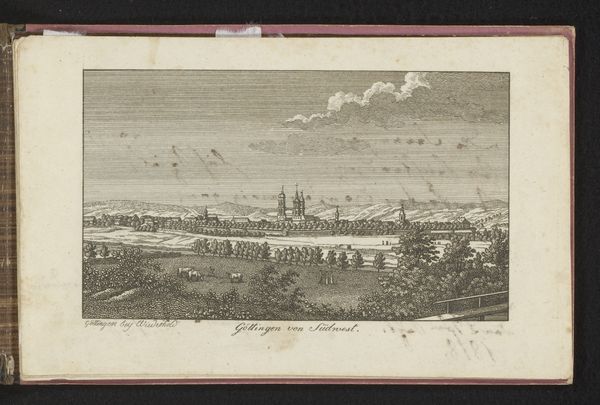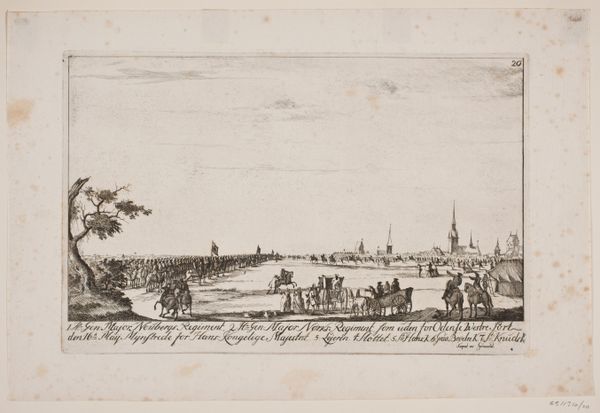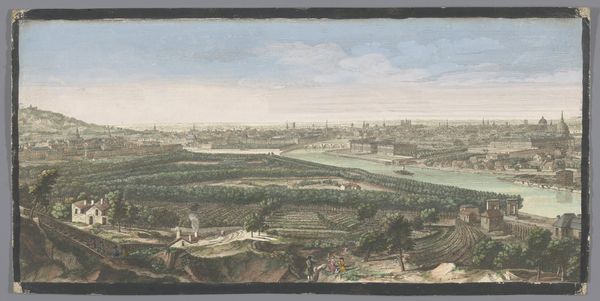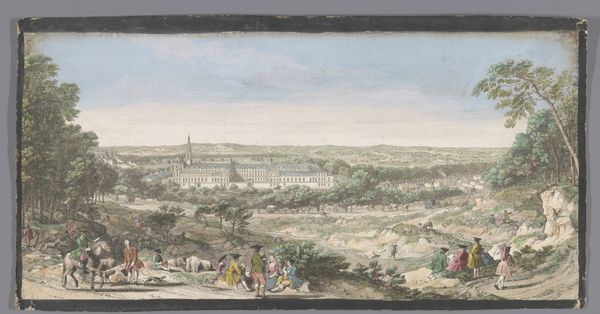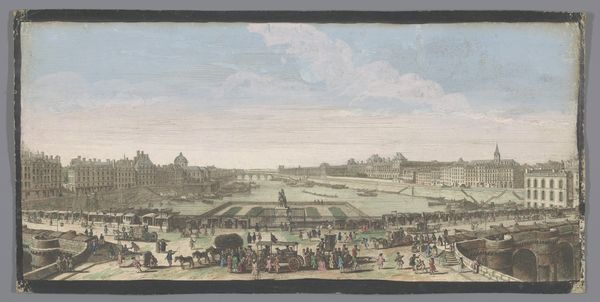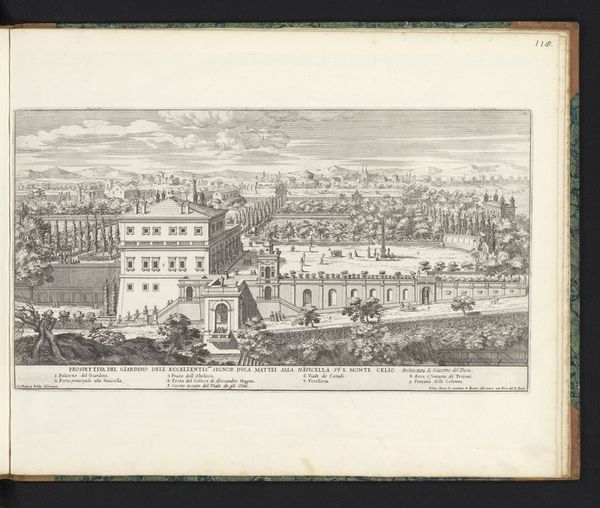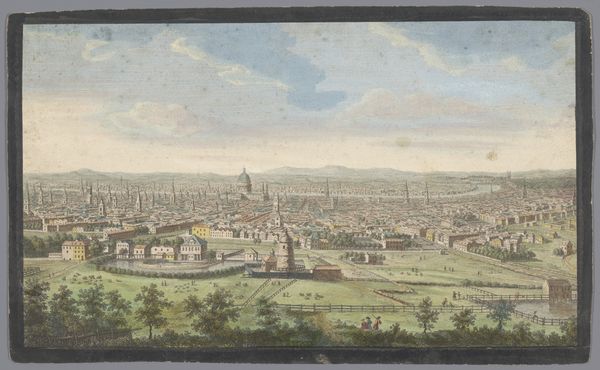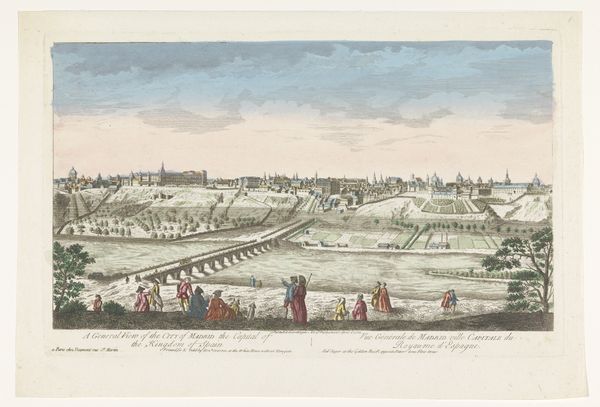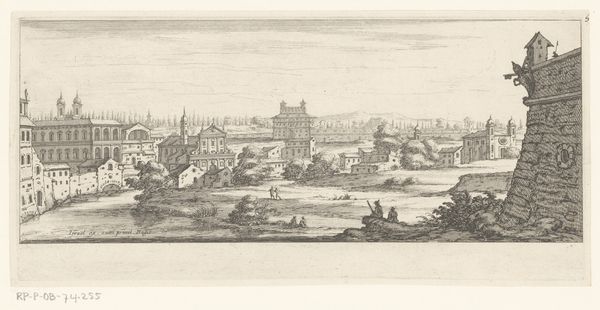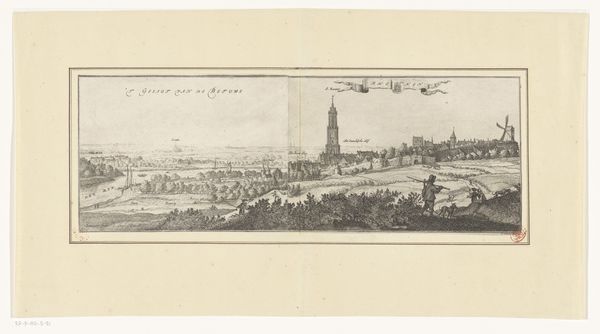
Gezicht op de stad Parijs gezien vanaf het dorp Ménilmontant 18th century
0:00
0:00
anonymous
Rijksmuseum
mixed-media, watercolor
#
mixed-media
#
water colours
#
landscape
#
watercolor
#
coloured pencil
#
cityscape
#
genre-painting
#
mixed medium
#
mixed media
#
rococo
Dimensions: height 227 mm, width 476 mm
Copyright: Rijks Museum: Open Domain
Curator: A panoramic vista! The cool blues and greens create such a serene, almost idyllic feeling, don’t you think? Editor: Indeed. We are looking at an 18th-century mixed-media work on paper, watercolor and coloured pencil, held here at the Rijksmuseum, entitled "View of the City of Paris from the Village of Ménilmontant.” What is fascinating here is to contextualize how visual representation of Parisian expansion was influenced by socio-economic reforms and increased urbanization in that century. Curator: It’s incredible to see the meticulous application of watercolor. Note the precise lines forming the architectural details; and I am also struck by the sheer volume of individual strokes of the coloured pencil composing the tree canopies, the textural rendering really animates them. Were there specialized workshops producing similar images en masse to satisfy an expanding market of the picturesque? Editor: Precisely. Picturesque views became commodities reflecting new public spaces shaped through Haussmann’s urban planning. Museums, too, gained prominence. The act of viewing and circulating these images created a particular idea about progress itself. It romanticizes, or perhaps even whitewashes, realities. It's important to question what's *not* shown as much as what is. Curator: An important point. Examining the material conditions – the affordability of paper, pigments, the ease of distribution – reveals a more complete story about the piece’s place in the market economy of its time. Even this technique of combining watercolor washes with coloured pencil lines suggests a mode of efficient production! The use of Rococo conventions further shows how that stylistic movement adapted into forms easily mass-produced for expanding capitalist ventures. Editor: We have the city laid out like a map, and those figures enjoying leisurely pursuits down below as observers within an image constructed with intention. Visual arts, here, as elsewhere, played a significant ideological function: celebrating not just beauty or nature but particular systems which allowed for its creation and proliferation to those wealthy enough. Curator: Examining its composite materiality – how the pigments interact with paper in quick, confident strokes, for example – lends insight into its historical agency, really. Thank you for lending your insight. Editor: Thank you, an invaluable experience. Together, perhaps we were able to see past its surface image.
Comments
No comments
Be the first to comment and join the conversation on the ultimate creative platform.
